Last year I found a coin that has turned out to be the best coin I've ever found. I was searching a river in Buckinghamshire England; working an area I'd previously searched every summer for 10 years. Finds had become very sparse, but in May 2012 I returned with my new CTX 3030 and I immediately saw “the site come to life!”
I started to work the inside bend of a bank that had previously produced several large first century Roman coins to a Minelab Excalibur 800. The first target of note was a lovely tin coin of James II, which has a copper plug fig1. This was in remarkable condition, and the date (1685) can still be read on the outside edge of the coin. I was so pleased to find this coin, they are rarely found in this condition.
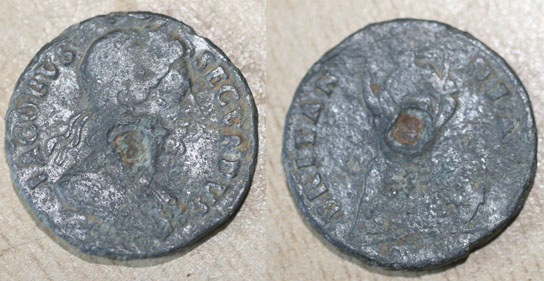 Fig1 – James II farthing
Fig1 – James II farthing
The next signal was about two feet further upstream, and on digging and scooping it I could see I had found some sort of decorated medieval lead fig2. Thinking what an incredible day, and imagining how the CTX 3030 was going to perform on my other worked out stream sites, I got a low toned target that sounded just like tin foil. The target was in the side of the bank, and on scooping it, I moved the target into the deeper water and into view. I leant over to pick it up thinking it was just going to be another tin coin. But as soon as I felt it in my hand, I knew it was a hammered coin. Looking at it my mind was still thinking James... I swear I was looking at the crowned pineapple of a half groat. It was only when I flipped the coin and saw the writing in lines across the coin that I realised I’d found something special.
Even un-cleaned it looked unusual, not a coin I recognised.
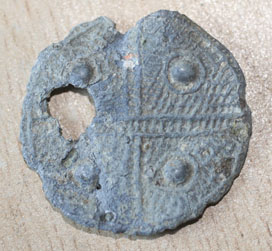
Fig 2 – Lead Medieval pilgrim badge type object?
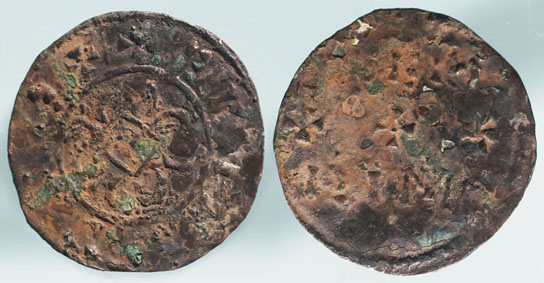 Fig 3 - Viking coin un-cleaned
Fig 3 - Viking coin un-cleaned
The coin was covered in a calcified river deposit mixed with a green hue of verdigris from the impurities within the silver. So I set out to clean the coin, first removing the calcium fig4, and then removing the verdigris. As I progressed through the process I checked various Saxon coin books looking for the coin as extra details were revealed. But by the time I'd completed the job I still couldn't identify the coin... Time to post it on the world-wide-web for experts to see!
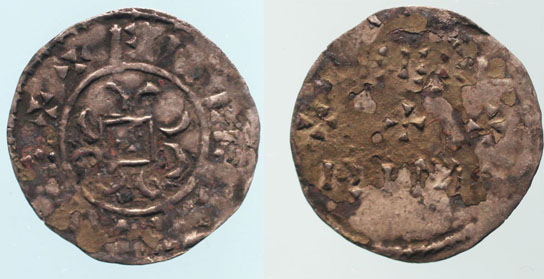 Fig 4 – Calcium carbonate removed
Fig 4 – Calcium carbonate removed
I photographed and posted images onto the UKDFD (United Kingdom Detecting Finds Database). I returned to the forum after my evening meal, and read Rod Blunt's initial ID that the coin could be a Viking coin of the Dane Law. This was a period of history when England had been divided between the Anglo Saxons and the invading Vikings. This period of history was something I'd studied at school, and I remembered that it was Alfred baptising a Viking named Guthrum that brought peace to England.
Rod advised I take the coin to the Fitzwilliam Museum in Cambridge, as the coin was apparently unique. He also surmised the name on the coin could be attributed to Aethelstan II, the baptised name of Guthrum.
The following day I took the coin to the museum and they confirmed the reading of the inscription, and that it was possibly the first halfpenny in the name of Athelstan II. They were surprised at the excellent condition of the coin, considering the age weight and thickness of the coin’s flan. So they suggested I should take it to the Oxford University to have the metallurgy analysed. This was somewhat odd, and I later discovered they had been suspicious of it being a modern forgery.
I decided to take the coin to Spinks, the premier coin dealers in London, for a second opinion. The expert looked at the coin and agreed with the reading of the inscription... But he wasn't sure if it was a Viking coin of Guthrum or a later coin of Aethelstan, king of all Britain 924-939ad. Either way he said it was unique, no other examples are known. Like the Fitzwilliam Museum he suggested I have the metallurgic content tested in an effort to closely date the coin.
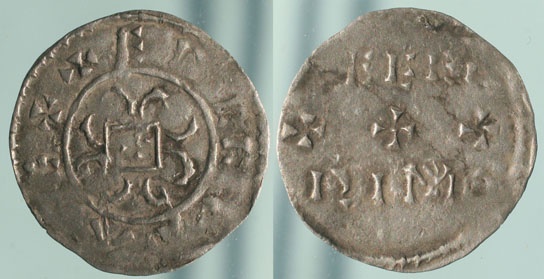 Fig 5 – The Viking coin cleaned
Fig 5 – The Viking coin cleaned
A few months later I finally managed to find the time to book an appointment with Oxford University, and with some trepidation I took the coin to be tested.
The whole process was a bit scary; they clamped it into a block vice using soft lead to grip the coin. Then they ground a small section of the edge of the coin, and finely-polished this section. The block-vice'd coin was then loaded into a machine, multiple points of the coin were selected and the machine got to work. After about five minutes they had the results of the metallurgic content of the silver. What was immediately noticed was the coin had a gold content of 9%, and a good silver content. The results were then compared to previously tested coins, and a near perfect match was found in a coin of Alfred the Great dating to c.890... contemporary to coins of Guthrum.
So all doubts had gone, this was a genuine halfpenny of Guthrum, in the name of Aethelstan, dating to the late ninth century.
It's always exciting finding something rare.... Even more exciting finding something unique.... But the best is finding something from such an important period of time!
The CTX 3030 has breathed new life into all my old river sites. I seem to find great finds every time I switch it on and get into the water. I have never had a detector pay for itself as quickly as this one. In fact I have been told the Viking coin's value (if sold) would at least purchase three CTX 3030's... And possibly more than five!
Now get out there and find something!
Gordon Heritage
MLOTV.com




















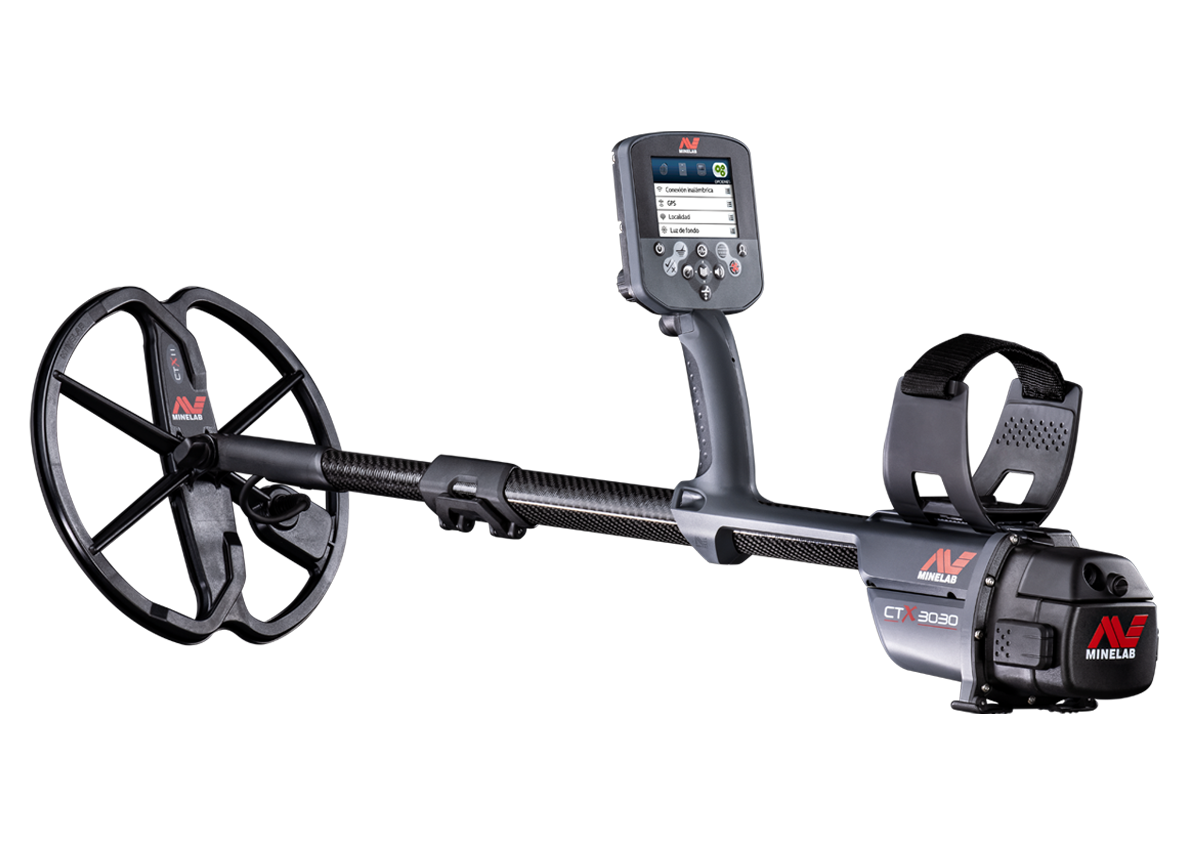
Comments
To make comments you must be logged in, please note comments will not display immediately due to moderation
Firstly, retrieving coins in water. You mentioned dislodging the coin into deeper water, were you wearing a mask? I struggle to retrieve finds in moving water / streams so any tips would be really appreciated.
Secondly, are you able to share the process that you used to clean the Viking coin? You have had phenomenal results without any degradation in quality.
Many thanks in advance.
I tend to just wade in my streams, to max depths of 5 feet only. I then scoop targets. Here is a short video I shot last Sunday showing the method;
http://www.minelabowners.com/forum/vbtube_show.php?tubeid=600
Sorry about the poor sound and dodgy language... but it will give you an idea of what we do.
I'm slightly wary of recommending my cleaning methods, in case my advice is implemented wrongly, ruining a coin. I chemically clean, removing specific substance with a corresponding acid.
Good news! We have waterproof X-TERRA coils for nugget detecting.
The 6-inch 18.75 kHz Double-D coil is extremely sensitive to small gold and completely waterproof.
For increased ground coverage there is the 15-inch All Terrain series (3kHz, 7.5kHz & 18.75kHz) by Coiltek, which are all waterproof.
For more information about all our coils download our Coil Selection guide by copying and pasting the following link into your browser.
http://www.minelab.com/__files/f/11792/KBA_02-2_Coil_Selection_Guide.pdf
Brenton.